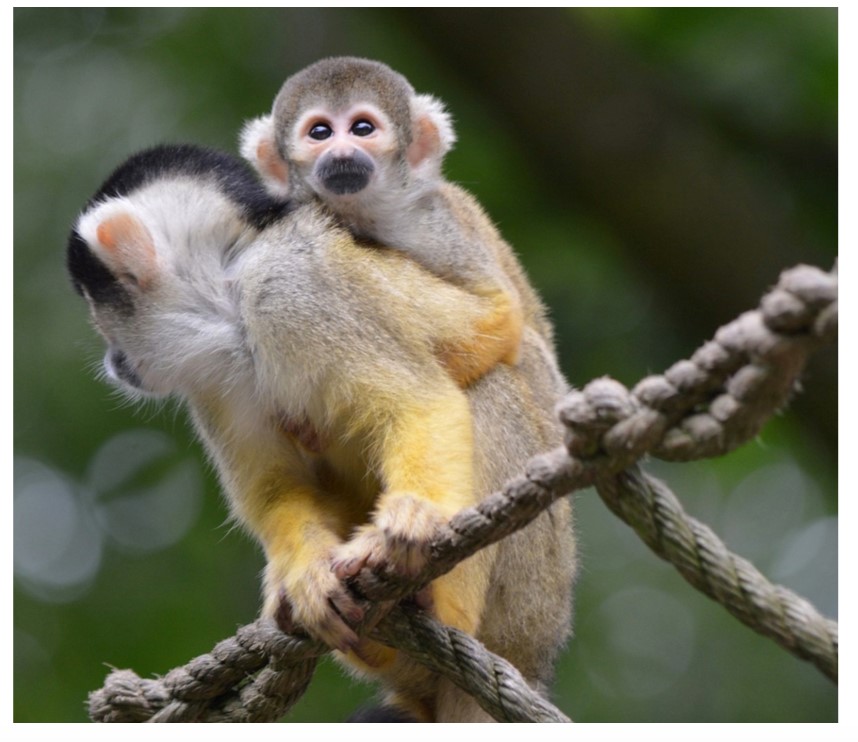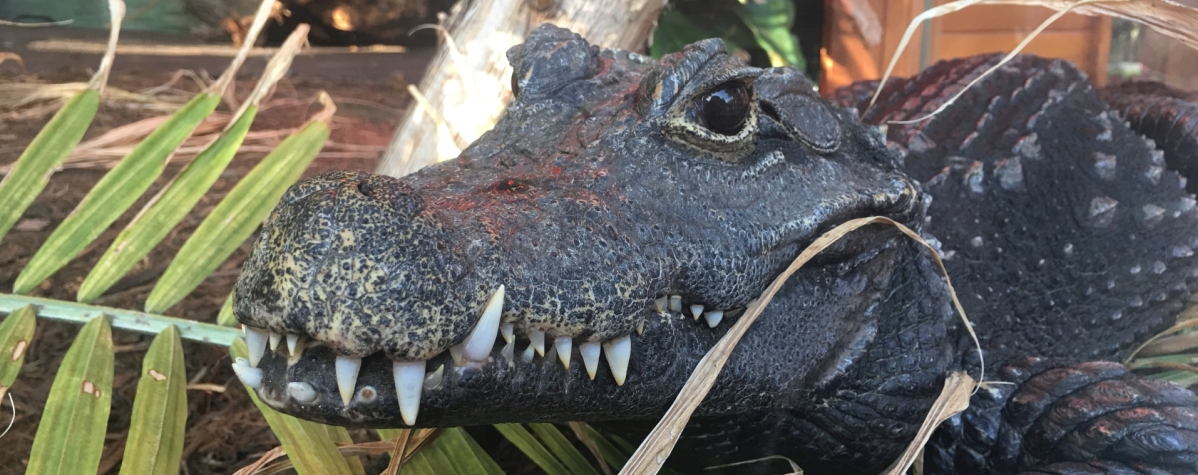Common Squirrel Monkey
Scientific Classification
| Species |
Saimiri sciureus sciureus |
| Kingdom | Animalia |
| Phylum | Chordata |
| Class | Mammalia |
| Order | Primates |
| Family | Cebidae |
| IUCN Status | Least Concern |
Appearance and lifespan
The squirrel monkey has a short coat of fur that is grey to olive in colour. It has characteristically bright yellow legs and a white face with a black forehead and muzzle.
The squirrel monkey is the smallest of the Cebidae primate family with a body that is on average 33 cm long (13 inches) with a slender build. Their non-prehensile tail is about 45 cm long (17.7 inches). The males weigh between 0.75 to 1.0 kg (1.7 to 2.2 pounds) and are larger than the females who weigh between 0.5 to 0.75 kg (1.1 to 1.7 pounds).
Squirrel monkeys have large canine teeth that they use for eating and asserting dominance. The male’s canine teeth are longer than the females.
Squirrel monkeys can live up to 20 years in captivity but usually live 10 to 12 years in the wild.
Behavior and reproduction
Squirrel monkeys have very complex social relationships because of the large groups that they live in which can reach up to 300 individuals. Females exhibit displays of dominance in the group and form the core of the unit. Separate groups of squirrel monkeys are not territorial but tend to mutually avoid one another.
Squirrel monkeys are diurnal which means they are active and search for food during the day, often running through the forest on branches.
A female will give birth to only one offspring after a 5-month gestation period. Young are born at the time of greatest rainfall in the year, this is when food is most plentiful. The infant will cling to the mothers back for 5 to 10 weeks. Other females in the group or “Aunts” often help with the raising of young squirrel monkeys. The young are weaned at 8 to10 months and are almost totally independent of the mother at the end of their first year; fathers do not help in raising the young. Males are mature at the age of 4 and females at the age of 2.5.
Ecology and conservation
The squirrel monkey inhabits the tropical rainforests of South America. They live mainly in the middle layers of the forest canopy but can be found on the ground or in the upper canopy layers.
Squirrel monkeys are omnivores, with a diet consisting mainly of fruit, insects, flowers and nectar. They spend several hours at the beginning of the day collecting fruit and then continue throughout the forest to find spiders and other insects to eat.
Food at the Zoo
At the zoo, squirrel monkeys are fed a monkey diet of mixed fruit and vegetables, raisins, seeds, nuts, mealworms, crickets, monkey biscuits and peanut butter.
Threats
Squirrel monkeys are occasionally hunted for food by humans, but are primarily sold as pets and used in medical research. The greatest contribution to their declining population is habitat destruction.
Although the squirrel monkey’s population size seems to be decreasing, it is not considered to be a threatened species; it is the most common monkey found in South America. This species has a relatively wide range and can adapt well to disturbed forest habitats.
Did You Know?
- A South American squirrel monkey group is called a ‘troop, barrel, tribe or cartload’.
- Squirrel Monkeys tails are only partly prehensile; they use their tail for balance.
- Squirrel monkeys mark their territory by urinating on their hands and feet and then tracking this around.
- The group of Common Squirrel monkeys here at Riverview Park and Zoo are part of a Species Survival Plan, which helps to ensure healthy numbers of certain species of animals in captivity in order to prevent extinction!
Adopt a Squirrel Monkey
Become a part of the the Riverview Park and Zoo family through our Adopt an Animal Program!


